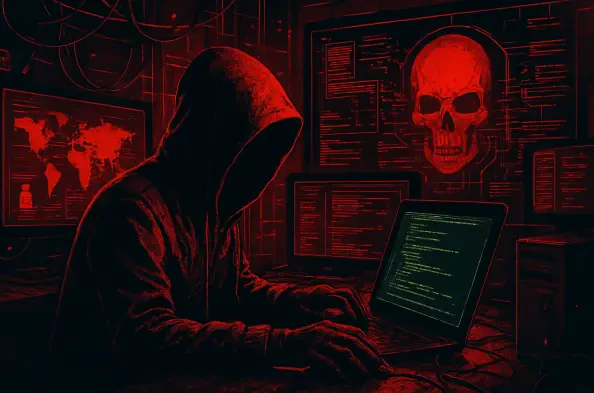Imagine a silent digital predator, striking at the heart of critical infrastructure across continents, exploiting vulnerabilities before organizations even realize they’re at risk, a reality that defines cyberespionage in 2025. With a Chinese threat actor group, dubbed RedNovember, emerging as a formidable challenge to global security, reports of breaches in US defense contractors, European manufacturers, and South Korean nuclear institutions have sent shockwaves through the cybersecurity community. This roundup gathers insights, strategies, and perspectives from various industry analyses and expert opinions to dissect the operations of this elusive group, assess the scale of their threat, and explore actionable defenses against state-sponsored cyber campaigns.
Digging into RedNovember: Scope and Scale of a Cyberespionage Giant
Origins and Global Impact
RedNovember has captured the attention of cybersecurity professionals worldwide due to its sophisticated operations targeting high-profile entities. Industry reports consistently point to the group’s likely state-sponsored origins in China, with a focus on infiltrating sectors critical to national and economic security. From aerospace in the US to diplomatic bodies in Southeast Asia, the breadth of their reach underscores a strategic intent to gather intelligence on a massive scale.
Analysts highlight that the group’s activities align with broader geopolitical objectives, often timing their attacks with significant events like state visits or international summits. This calculated approach suggests a deep understanding of global dynamics, making their operations not just a technical threat but a diplomatic concern. The consensus among experts is that understanding their motives is as crucial as countering their methods.
The stakes are particularly high given the potential compromise of sensitive data and critical infrastructure. Many in the field argue that RedNovember represents a new benchmark for cyberespionage, pushing organizations to rethink traditional security paradigms. This roundup aims to unpack these concerns by collating diverse perspectives on how such a group operates under the radar.
Challenges in Tracking a Shadowy Adversary
One recurring theme across cybersecurity discussions is the difficulty in attributing and tracking RedNovember’s movements. Experts note that the group employs advanced obfuscation techniques, making it challenging to pinpoint their infrastructure or confirm state backing definitively. This anonymity fuels debates over how much international cooperation is needed to expose such actors.
Some industry voices suggest that the lack of concrete attribution emboldens groups like RedNovember, allowing them to operate with impunity. Others argue that the focus should shift from attribution to prevention, emphasizing the need for real-time threat intelligence sharing among nations and corporations. This split in opinion highlights a broader tension in the field about reactive versus proactive strategies.
Ultimately, the shadowy nature of this threat actor amplifies the urgency for global cybersecurity frameworks to evolve. Reports indicate that without unified efforts, organizations remain vulnerable to espionage campaigns that exploit both technological and geopolitical blind spots. This section sets the stage for deeper insights into their specific tactics.
Tactics and Tools: How RedNovember Penetrates Defenses
Exploiting Edge Devices as Entry Points
A common observation across cybersecurity analyses is RedNovember’s adeptness at targeting edge devices—hardware from vendors like Cisco, Fortinet, and Palo Alto Networks. Multiple sources confirm that the group exploits newly disclosed vulnerabilities in these systems, often faster than patches can be deployed. This rapid exploitation cycle poses a significant hurdle for organizations reliant on such technology.
Debates persist over who bears responsibility for securing these devices: vendors or end-users. Some industry leaders advocate for stricter vendor accountability, pushing for faster patch releases and built-in security features. Conversely, others stress that organizations must prioritize timely updates and robust monitoring to close these gaps, regardless of vendor actions.
The consensus, however, is that edge devices remain a critical weak point in global networks. Examples of breaches in US defense contractors since 2025 illustrate how these vulnerabilities can lead to devastating compromises. Strengthening defenses at this perimeter is a priority echoed across expert discussions, urging a collaborative approach to mitigate risks.
Sophisticated Toolkits for Sustained Access
RedNovember’s arsenal, including custom tools like the Go-based Pantegana backdoor alongside Cobalt Strike and SparkRAT, is frequently cited in industry breakdowns as evidence of their technical prowess. Cybersecurity reports detail how these tools enable persistent command-and-control over compromised systems, often evading traditional detection mechanisms. Such sophistication is a hallmark of state-sponsored operations.
Additional insights reveal the group’s use of VPN services like ExpressVPN for managing servers, adding layers of anonymity to their activities. Some analysts warn that this adaptability in tool deployment signals a trend toward more elusive espionage tactics. Others see an opportunity, suggesting that monitoring for specific tool signatures could offer a pathway to early detection.
The risk of prolonged access, as seen in sustained infiltrations of intergovernmental bodies in Southeast Asia, is a focal point of concern. Experts across the board agree that countering these tools requires advanced threat hunting and updated security protocols. This shared perspective underscores the need for innovation in defensive technologies to match the evolving offensive landscape.
Diverse Targets: RedNovember’s Multi-Sectoral Ambitions
Spanning Industries and Continents
Cybersecurity assessments consistently note the wide-ranging targets of RedNovember, from US aerospace firms to South Korean nuclear research institutions. This multi-sectoral focus, spanning Europe, Asia, Africa, and the Americas, defies the assumption that only defense industries are at risk. Reports emphasize that even non-military sectors like manufacturing and law face significant exposure.
Geopolitical timing is another critical factor highlighted in expert analyses. Attacks often coincide with high-profile events, such as diplomatic engagements with China, suggesting a strategic alignment with national interests. Some analysts predict this pattern will intensify with rising international tensions, while others caution against over-emphasizing political motives at the expense of technical preparedness.
The diversity of targets challenges organizations of all sizes to reassess their vulnerability. Industry opinions converge on the idea that no sector is immune, pushing for broader awareness and cross-industry collaboration. This universal threat landscape demands a shift in how cybersecurity resources are allocated globally.
Long-Term Espionage and Adaptive Strategies
The persistence of RedNovember’s campaigns, such as their prolonged access to a Southeast Asian intergovernmental organization, is a recurring topic in cybersecurity circles. Many experts compare their tactics to other Chinese state-sponsored groups, noting a shared emphasis on rapid vulnerability exploitation. This long-game approach sets them apart from opportunistic hackers.
Differing views emerge on how this adaptability might evolve. Some in the field anticipate a pivot toward emerging technologies like AI or IoT systems as future targets. Others believe critical infrastructure will remain the primary focus, given its strategic value. These contrasting forecasts reflect the uncertainty surrounding long-term espionage trends.
Despite varying predictions, there is agreement that RedNovember’s ability to tailor attacks to specific contexts complicates defense efforts. Industry insights stress the importance of predictive analytics to stay ahead of such adaptive threats. Building resilience against sustained espionage is seen as a collective challenge requiring global attention.
Countering the Threat: Strategies from the Cybersecurity Community
Prioritizing Edge Security and Patching
A key takeaway from various cybersecurity discussions is the urgent need to secure edge devices against exploitation. Multiple sources advocate for rigorous patch management as a first line of defense, given RedNovember’s focus on newly disclosed vulnerabilities. This actionable step is seen as non-negotiable across expert opinions.
Beyond patching, some industry leaders push for advanced threat detection systems to identify anomalies at network perimeters. Others emphasize vendor collaboration to embed stronger security features into hardware from the outset. These complementary approaches highlight a shared recognition of edge security as a critical battleground.
The dialogue also underscores the importance of resource allocation for smaller organizations that may lack the capacity for rapid response. Cybersecurity forums suggest mentorship programs or shared tools to level the playing field. Strengthening this foundational layer of defense remains a unifying priority in expert recommendations.
Building Resilience through Collaboration and Training
Cross-sector collaboration emerges as a prominent theme in strategies to combat state-sponsored threats like RedNovember. Industry analyses call for governments, private entities, and international bodies to share threat intelligence in real time. This cooperative model is viewed as essential to outpace sophisticated adversaries.
Employee training is another frequently cited defense mechanism, with experts noting that human error often amplifies technical vulnerabilities. Tailored programs to recognize phishing attempts or suspicious activity are recommended across reports. This focus on the human element adds a practical dimension to broader technological solutions.
Finally, fostering a culture of cybersecurity awareness is seen as vital for long-term resilience. Many in the field argue that integrating security into organizational DNA can deter persistent threats. This holistic approach, combining collaboration and education, reflects a consensus on preparing for an evolving digital battlefield.
Reflecting on a Persistent Challenge
Looking back, the roundup of insights on RedNovember paints a vivid picture of a sophisticated cyberespionage entity that tests the limits of global defenses. The discussions reveal a threat actor adept at exploiting edge devices, wielding advanced tools, and targeting a diverse array of sectors with strategic precision. Diverse expert perspectives provide a comprehensive view of both the challenges and potential countermeasures that shape the cybersecurity landscape.
Moving forward, organizations are encouraged to adopt a multi-layered defense strategy, starting with securing critical infrastructure and extending to international partnerships for threat intelligence. Investing in predictive tools to anticipate attack patterns offers a proactive edge against adaptive adversaries. These steps, grounded in the lessons learned, aim to fortify digital environments against the next wave of state-sponsored campaigns.






